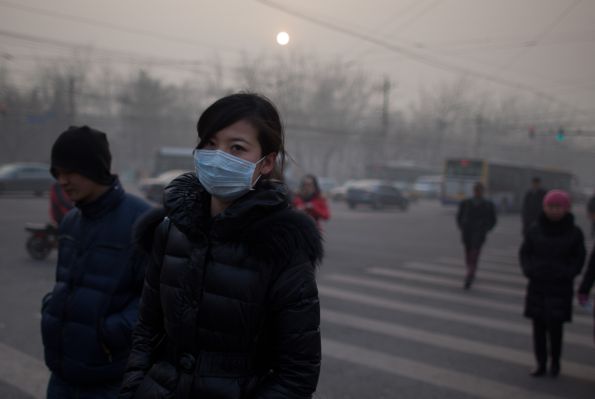雅思阅读
2017-08-02 14:26
来源:新东方网整理
作者:
新东方网雅思频道全新推出“每日雅思阅读精选”栏目,我们将为大家精心挑选国外网站上的优秀文章供考生们进行阅读练习,帮助大家提高雅思阅读水平,每天读几篇文章,每天有一点提高,相信不久之后,雅思阅读考试将不再是困扰考生们的难题。
推荐阅读方法:首先快速阅读全文,掌握文章大意,提高阅读速度;再进行精读训练,学习其中的词汇和语言的用法。
雅思阅读精选:北京空气污染——最黑暗的一天(附参考译文)
Beijing's air pollution
Blackest day

雅思阅读精选:北京空气污染—最黑暗的一天_新东方网雅思频道
ON January 12th of last year, in an article in the print edition of The Economist, we reported that the public outcry over Beijing’s atrocious air quality was putting pressure on officials to release more data about more kinds of pollutants. We also noted that Chinese authorities had already embarked on a wide range of strategies to improve air quality, and that they probably deserve more credit than either foreign or domestic critics tend to give them. But we concluded with the sad reality that such work takes decades, and that “Beijing residents will need to wait before seeing improvements.”
On January 12th of this year, Beijing residents got an acrid taste of what that wait might be like, as they suffered a day of astonishingly bad air. Pollution readings went, quite literally, off the charts. Saturday evening saw a reading of 755 on the Air Quality Index (AQI). That index is based on the recently revised standards of the American Environmental Protection Agency (the EPA), which nominally maxes out at 500. For more perspective, consider that any reading above 100 is deemed “unhealthy for sensitive groups” and that anything above 400 is rated “hazardous” for all.
Like many Beijing residents, your correspondent has mobile-phone apps that keep up with the pollution readings. At an otherwise pleasant Saturday-evening meal with friends, he joined his companions in compulsively checking for updates.
Those previously unseen numbers were hard to believe, but they did seem to match up well enough with the noxious soup we could see, smell and taste outside. We are all far more familiar with the specifics of air-quality measurement than we would like to be. Apart from the AQI readings above 700, we were quite struck to see the readings for the smallest and most dangerous sort of particulate matter, called PM 2.5, which can enter deep into the respiratory system. These are named for the size, in microns, of the particles. A reading at a controversial monitoring station run by the American embassy showed a PM 2.5 level of 886 micrograms per cubic metre; Beijing’s own municipal monitoring centre acknowledged readings in excess of 700 micrograms.
For perspective on that set of figures, consider that the guideline values set by the World Health Organisation regard any air with more than 25 micrograms of PM 2.5 per cubic metre as being of unacceptable quality.
Chinese authorities have complained about the American embassy's insistence on independently monitoring—and publicly reporting—Beijing’s air quality. And sometimes much is made of the vast differences between those readings and China’s own official ones, which are often less dire. Indeed, a key feature of one of those mobile-phone apps is the side-by-side comparison of those competing data-sets. (It is of course a bad sign that people here need more than one app to keep up with all this.)
But on a day like Saturday, the discrepancy between official readings and independent ones hardly seemed to matter; you didn't need a weatherman to know which way the ill wind blew. Or failed to blow, as the case may have been. One expert quoted by Chinese media attributed this spike in pollution to a series of windless days that allowed pollutants to accumulate.
But wind can be a problem when it does blow, too. In the outlying provinces that are part of Beijing’s airshed, there is a great deal of heavy industry. Pollution regulations are much harder to enforce there. And, in this colder-than-average winter, people have been burning more coal and wood than usual.
It is likely to be many more Januarys to come before China gets the upper hand on its air-pollution problems. Indeed, as we mentioned last January 12th, after nearly sixty years of trying and a vast amount of progress, the city of Los Angeles has yet to meet America's federal air-quality standards. If there is any consolation to what Beijing had to endure this January 12th, it is that it should lend urgency to the public outcry, and help speed things in the right direction.
The other consolation is that readings like the ones showing now on Monday midday (in the mid 300s, merely “hazardous” and “severely polluted”) feel fine by comparison.
(Picture credit: AFP)
参考译文见下一页

扫码添加大队长Sam,领取最新沪上热门国际学校招生信息
A BETTER YOU,A BIGGER WORLD!
版权及免责声明
①凡本网注明"稿件来源:新东方"的所有文字、图片和音视频稿件,版权均属新东方教育科技集团(含本网和新东方网) 所有,任何媒体、网站或个人未经本网协议授权不得转载、链接、转贴或以其他任何方式复制、发表。已经本网协议授权的媒体、网站,在下载使用时必须注明"稿件来源:新东方",违者本网将依法追究法律责任。
② 本网未注明"稿件来源:新东方"的文/图等稿件均为转载稿,本网转载仅基于传递更多信息之目的,并不意味着赞同转载稿的观点或证实其内容的真实性。如其他媒体、网站或个人从本网下载使用,必须保留本网注明的"稿件来源",并自负版权等法律责任。如擅自篡改为"稿件来源:新东方",本网将依法追究法律责任。
③ 如本网转载稿涉及版权等问题,请作者见稿后在两周内速来电与新东方网联系,电话:010-60908555。
雅思阅读
